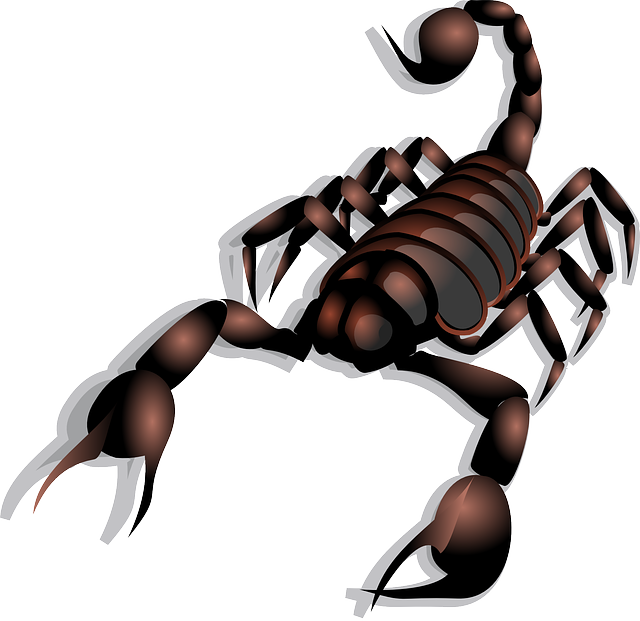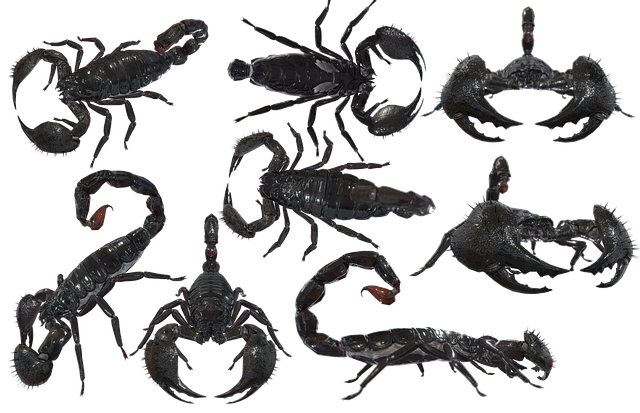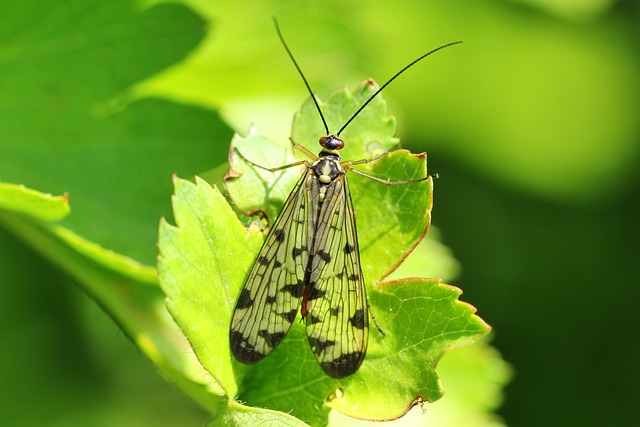Scorpions play a natural role within Arizona's Sonoran Desert, particularly in Vail, where their presence necessitates careful management due to the risk posed by their venomous stings to both humans and pets. Understanding their biology and habitat preferences is crucial for implementing effective scorpion control measures in Vail AZ. These measures include sealing potential entry points, managing outdoor lighting, maintaining clean and well-lit environments, and reducing landscaping features that provide scorpions with harborage. Professional pest control services specialized in scorpion management should be consulted for treatment of infestations or when direct encounters occur. This proactive approach to scorpion control balances the importance of these creatures within the ecosystem with the need to ensure public safety, utilizing a combination of environmental management and community awareness initiatives. The goal is to minimize human-scorpion interactions and promote a harmonious coexistence in Vail's desert environment.
Scorpions, with their distinctive pincers and venomous tail, are a remarkable fixture in the arid landscapes of Vail, Arizona. This article delves into the intricate biology and behavior of these arachnids, revealing how they thrive amidst the cacti and sand dunes of Vail’s desert environments. We explore their key habitat characteristics, which contribute to their survival in this unique ecosystem. Additionally, understanding the best scorpion control practices becomes crucial for residents of Vail AZ, as we outline effective strategies to coexist safely with these intriguing creatures.
- Understanding Scorpion Biology and Behavior in Vail, Arizona's Desert Ecosystems
- Key Characteristics of Scorpion Habitats in Vail's Arid Landscapes
- Effective Strategies for Scorpion Control in Vail AZ Homes and Environments
Understanding Scorpion Biology and Behavior in Vail, Arizona's Desert Ecosystems

Scorpions in Vail, Arizona, are a fascinating and integral part of the Sonoran Desert’s ecosystem. These arachnids possess biology and behavior finely tuned to their harsh desert environment. Understanding scorpion biology is crucial for effective scorpion control in Vail AZ. Scorpions have a chitinous exoskeleton that provides protection against predators and the elements. Their eight legs are adapted for rapid movement, allowing them to avoid potential threats such as predatory birds, spiders, and mammals. Scorpions are nocturnal creatures, predominantly active during the night when they forage for food, which includes insects, spiders, and other small arthropods. Their venom is used both for hunting and defense, with a potent neurotoxin capable of immobilizing prey or deterring larger predators.
Behaviorally, scorpions exhibit traits that enhance their survival in Vail’s desert landscapes. They possess chemosensory organs that enable them to detect humidity gradients, which guide them to moist microhabitats essential for their survival. These habitats often lie beneath rocks, wood, or plant debris where the relative humidity is higher. Scorpions also regulate their body temperature through behaviors such as basking in the sun and seeking shade during the hottest parts of the day. This thermoregulatory strategy ensures they remain active despite the extreme temperature variations characteristic of the desert. Efforts in scorpion control Vail AZ focus on understanding these behaviors to implement effective mitigation strategies, particularly in residential areas where human-scorpion interactions are more frequent. By combining environmental management practices with awareness campaigns, local communities can coexist harmoniously with these remarkable creatures.
Key Characteristics of Scorpion Habitats in Vail's Arid Landscapes

Scorpions in Vail, Arizona, thrive in the arid landscapes characterized by their unique environmental requirements. These habitats typically consist of rocky terrains and sandy soils that are prevalent throughout the region. The key characteristics of these scorpion-inhabited areas include a consistent availability of microhabitats such as crevices, under rocks, and within the burrows they create, which provide protection from extreme temperatures and predators. The sparse vegetation found in Vail’s deserts offers limited food sources for scorpions, necessitating efficient hunting and conservation strategies.
Vail’s desert environments are defined by their low humidity and infrequent rainfall, conditions that scorpions adapt to with specialized physiological features like waxy cuticles that prevent water loss. The scarcity of water in these areas underscores the importance of conserving moisture. Scorpion control measures in Vail AZ are therefore tailored to address both their ecological roles and the need to protect human habitation from potential encounters with these arachnids. Understanding the habitat preferences of scorpions is crucial for effective control strategies, which can range from exclusion methods to targeted pest management approaches that aim to minimize human-scorpion interactions while preserving the balance of the local ecosystem.
Effective Strategies for Scorpion Control in Vail AZ Homes and Environments

Scorpion control in Vail, Arizona homes and environments necessitates a multifaceted approach that addresses both prevention and response strategies. To effectively manage scorpion populations, homeowners should prioritize exclusion techniques, sealing cracks and crevices where scorpions might enter, particularly around foundations, windows, and doors. Employing weather stripping and caulking can significantly reduce the likelihood of these arachnids finding their way indoors. Keeping outdoor lights directed away from the house can prevent attracting scorpions that are drawn to warmth and light sources.
In addition to physical barriers, maintaining a clean and well-lit environment is crucial for scorpion control in Vail AZ. Regularly trimming foliage and removing debris, rocks, and woodpiles from immediate proximity to the home can minimize habitat for both scorpions and their prey. Limiting clutter indoors, particularly in garages and storage areas, reduces potential hiding spots. Using a dehumidifier to control moisture levels can also make the environment less hospitable to scorpions. For suspected infestations or direct encounters, professional pest control services specializing in scorpion management should be consulted to implement targeted treatments safely and effectively, ensuring the protection of both property and inhabitants from these venomous creatures.
Scorpions in Vail, Arizona, are remarkable survivors, expertly navigating the arid landscapes that characterize this region. Their biology and behavior are uniquely adapted to conserve water and seek out shelter during the scorching desert days. Understanding these adaptations is crucial for effective scorpion control measures in local homes and environments. By implementing targeted strategies, residents of Vail can coexist with these arachnids, minimizing risks while respecting the natural balance of the desert ecosystem. Scorpion control in Vail AZ homes not only safeguards health but also preserves the integrity of the region’s biodiversity.
